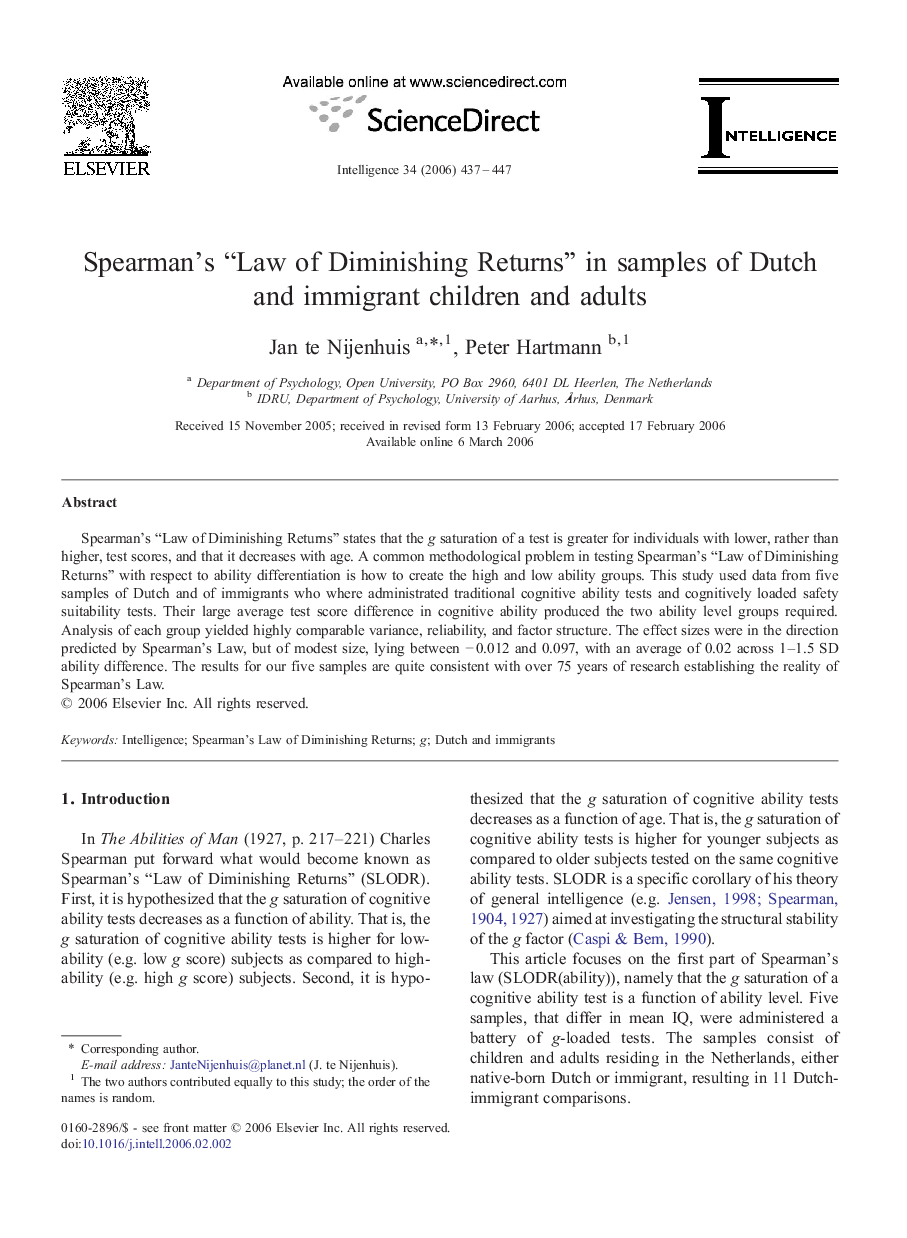| Article ID | Journal | Published Year | Pages | File Type |
|---|---|---|---|---|
| 929374 | Intelligence | 2006 | 11 Pages |
Spearman's “Law of Diminishing Returns” states that the g saturation of a test is greater for individuals with lower, rather than higher, test scores, and that it decreases with age. A common methodological problem in testing Spearman's “Law of Diminishing Returns” with respect to ability differentiation is how to create the high and low ability groups. This study used data from five samples of Dutch and of immigrants who where administrated traditional cognitive ability tests and cognitively loaded safety suitability tests. Their large average test score difference in cognitive ability produced the two ability level groups required. Analysis of each group yielded highly comparable variance, reliability, and factor structure. The effect sizes were in the direction predicted by Spearman's Law, but of modest size, lying between − 0.012 and 0.097, with an average of 0.02 across 1–1.5 SD ability difference. The results for our five samples are quite consistent with over 75 years of research establishing the reality of Spearman's Law.
